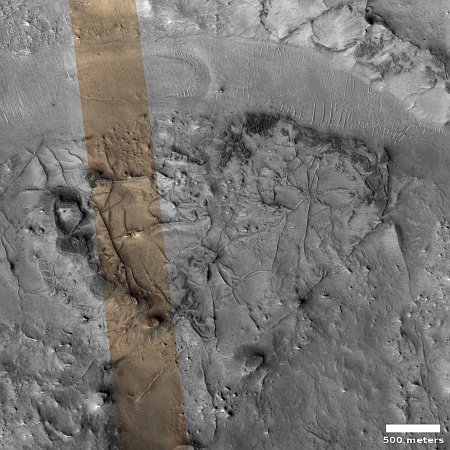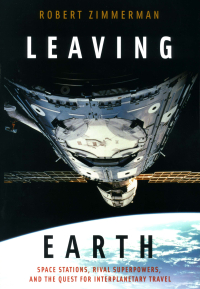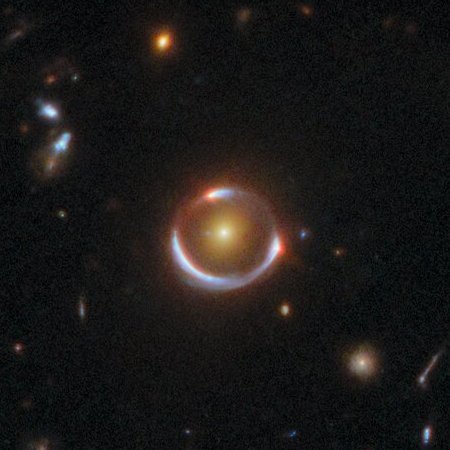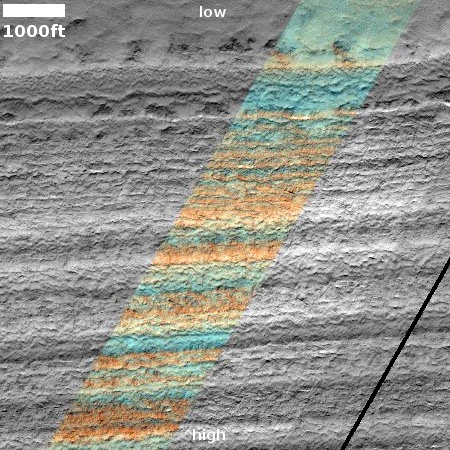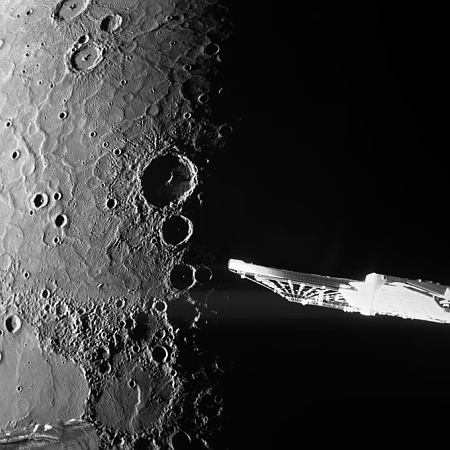Ridges from fractures at the head of a 300+mile-long Martian drainage channel
Cool image time! The picture to the right, cropped, reduced, and sharpened to post here, was taken on October 4, 2024 by the high resolution camera on Mars Reconnaissance Orbiter (MRO).
The science team labels this “Exhumed Fracture Network,” referring to the criss-crossing ridges on the eroded mesa at the picture’s center. That mesa only rises about sixty feet from the east-west channel at the top of the picture, but the location is actually on the outside northern rim of an unnamed 70-mile-wide very eroded ancient crater. The rim itself rises another 500 feet to the south before descending 10,000 feet to the crater floor.
I am assuming by the title that the geologists believe this ridges were originally cracks that got filled with more resistant material, probably lava. The fracture network then got covered over. More recent erosion removed the material around the cracks, but the material in the cracks resisted that erosion.
The most intriguing feature in this picture however might actually be that nondescript channel.
» Read more
Cool image time! The picture to the right, cropped, reduced, and sharpened to post here, was taken on October 4, 2024 by the high resolution camera on Mars Reconnaissance Orbiter (MRO).
The science team labels this “Exhumed Fracture Network,” referring to the criss-crossing ridges on the eroded mesa at the picture’s center. That mesa only rises about sixty feet from the east-west channel at the top of the picture, but the location is actually on the outside northern rim of an unnamed 70-mile-wide very eroded ancient crater. The rim itself rises another 500 feet to the south before descending 10,000 feet to the crater floor.
I am assuming by the title that the geologists believe this ridges were originally cracks that got filled with more resistant material, probably lava. The fracture network then got covered over. More recent erosion removed the material around the cracks, but the material in the cracks resisted that erosion.
The most intriguing feature in this picture however might actually be that nondescript channel.
» Read more

